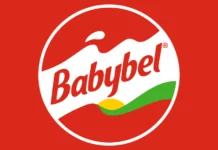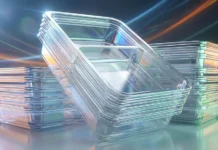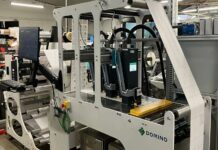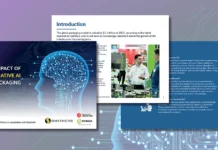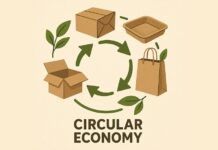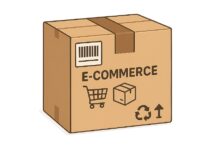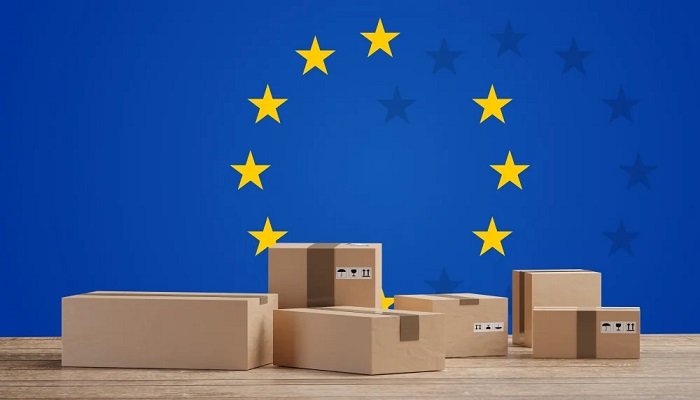Western Europe ranks as the third-largest packaging market globally, following Asia and North America. The factors that are going to influence it in the coming years are both foreseeable as well as widespread.
The EU’s Green Deal is the main driving force behind the sector, as it is dedicated to decreasing wasteful and unnecessary packaging. Additionally, it also aims to promote re-use and recycling by establishing ambitious long-term objectives. These topics emphasise the importance of using high-quality reused plastics and also sustainable materials.
Digitalization has a significant impact on the packaging sector, just like it has on numerous other industries.
Sustainable packaging
There is a growing recognition of the significance of sustainable packaging when it comes to the distribution of goods. This acknowledgement is coming from various stakeholders, which include governments, product manufacturers, as well as public. The growing public awareness of responsibility for the environment is fuelling a need for bio-based as well as recyclable packaging. In fact, consumers are ready to pay a higher price for goods that come in packaging that happens to be less harmful to the environment.
Digitalization
Digitalization in the packaging sector brings out new and improved possibilities for every element of the supply chain, right from the design of the packaging to when it is received and unboxed.
There are chances for enhanced digital collaboration between packaging designers, pre-press specialists, as well as printers further up the chain. This integration would allow them to work together and create concepts and designs at the same time, resulting in a more effective design process. By having increased availability of shared data, the overall process can be streamlined, thereby saving time. Additionally, it helps reduce the possibility of mistakes from the very beginning.
The downstream effects of digitalization include multiple modifications, such as the adoption of scanned labels that can be read by tech. This eventually leads to the adoption of QR codes, which greatly improve the interaction between consumers and suppliers, particularly for tasks like manual downloads.
Numerous developments shaping the packaging sector
In addition to the prominent mega-trends of recycling, re-use, and digitization, design trends aimed at enhancing the user experience and encouraging engagement are also important variables in today’s competitive scenario.
Below are some of the shared trends that industry researchers have discovered that are projected to have an influence in the coming years:
-E-commerce has unique demands when it comes to packaging layout. As a result, the field of packaging in e-commerce has emerged as a distinct sector. Companies that happen to sell online are now creating packaging designs that have been tailored for this purpose.
In this segment, there is a constant need for special designs due to different technical, legislative, as well as business influences. The packaging must be done with versatility, security, robustness, and strength in mind. This ensures that the product stays intact and reaches the consumer effectively after transit. These requirements require a lightweight solution with no compromise on quality.
At the stage of delivery, it is essential for the consumer experience to be interesting. This makes sure that the process of opening the product adds to the overall pleasure. The e-commerce sector encounters a high rate of product returns, which highlights the need for packaging that is sufficiently strong to endure the process of return.
Sustainability is also an important aspect in the e-commerce packaging industry, as there is now an increasing resistance to using single-use plastics. In the future, there will be a shift towards increased utilisation of bio-based plastics as well as expanded polystyrene. Big online retailers such as Amazon are the major drivers in this field.
– Haptic design is becoming more and more common as it allows customers to have a greater sense of touch when selecting products. There are various ways in which this can be utilised, such as raised printed type, foil embossing, or even creative cutting techniques. These methods enhance the packaging, making it more interesting and pleasing to hold.
The area is experiencing a transition from luxury-end products to more mainstream choices. Digitalization persists to play a significant role, offering small companies the possibility to participate in this movement.
– Minimalism is also creating a lot of interest in the industry, particularly due to the pressing desire to reduce waste from packaging. The challenge one faces is to maintain a positive consumer experience when opening products. One must ensure that the packaging-consumer communication remains untouched, even as one strives for simplicity. This will require finding creative solutions that maintain the product visually and engagingly packaged.
– The 3D printing tech happens to provide advanced opportunities for creating typical shapes. This technique is particularly valuable for packaging goods with distinctive forms and profiles. It can also help overcome challenges in producing containers with complex shapes, which may be hard to achieve using traditional industry methods.
– Researchers view nostalgic trends as providing a sense of security to consumers. This is evident in the present revival of retro impacts from the 1950s, 1970s, and 1990s. The desire for safety and familiarity has been influenced by the havoc caused by the COVID-19 pandemic.
– Seamless designs on packaging, which flow constantly from the front to the back and then back to the front, are also becoming more popular. Therefore, 360-degree designs such as these provide distinctive advantages that create a visually powerful difference in terms of shelf appeal.
– Smart packaging is gaining popularity, particularly in the food industry. It utilises detectors to identify ambient factors like temperature and humidity. Smart packaging of food can provide consumers with the ability to obtain nutritional information about the products it contains.
– Food packaging is undergoing a noticeable shift towards incorporating designs that represent what’s inside the box. The current trends depict simple styles that are achieved through the use of vibrant colours.
– Consumers are placing greater value on personalisation, making it a highly sought-after trait. The digital print sector is well-suited to meet the demands of rapid turnaround and quick transition that come with customization.
Digital printing brings everything together
The digital printing of packaging is anticipated to experience significant growth in the years to come, offering many benefits for different sectors. The use of digital printing technology may successfully satisfy the increasing demand for commercial packaging and, at the same time, contribute to the reduction of installation waste.
There are several additional benefits to think about when it comes to digital printing right away onto packaging materials such as paper, cardboard, and transfer films. These benefits further enhance its appeal for low-volume packaging needs and also make small and medium-sized prints more affordable to produce.
Digital printing technology plays an essential role in facilitating the growing trend towards customization. It not only enables companies to engage more effectively with their clients but also improves the perception of their brand. Digital printing offers the additional advantage of unique printed designs across multiple materials and products, which further shifts the scale in its favour.





